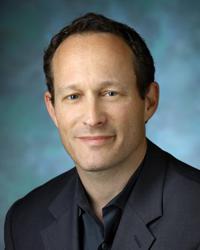Research Lab Results
-
Kata Design Studio
We started Kata to bridge the gap between professional experiential production and neuroscience, clinical neurology, and medical hardware. We strive to build experiences and technology from the ground up, with a focus on mission, and at a level that is consistent with the best productions in the industry. We mirror the thousands of hours that go into a level design in a video game, but with the crucial difference that the focus is on the subtleties required for patient treatment or wellness. Our designs require high-frequency iterative development with patients and users in countless game-play sessions in which they provide crucial feedback. Characters have been painstakingly crafted to elicit profound emotional responses. Some of the requirements for patients or the elderly population in this space are qualitatively different from what is needed in the entertainment marketplace. That said we have also understood the critical artistic similarities. The core ethos of Kata is that the challenge of complex movement has profound benefits for cognition, wellness, and brain repair. Specifically, there is growing evidence that complex motor movement can have cognitive benefits that go beyond what has been reported for exercise alone. When designing experiences to treat motor impairments after stroke, maximizing rigorous and dynamic motor input is a requirement. New interactive technologies will allow people to engage in diverse and complex motor movements, even in the home, which was previously impossible. Overall it has been a very exciting journey, combining art, medicine, technology, and neuroscience. We continue to build, discover, and craft immersive experiences, side by side with physicians, physical therapists, and scientists, with the common goal of pushing clinical care and wellness forward. We believe this is only possible by having a mission focused design group embedded in an academic hospital. Ultimately, we wish to scale and perfect these innovations into other hospitals. Kata is a true hybrid of academia, and industry, doing what neither can do in isolation. We hope the ethos and design philosophy behind Kata provides the impetus for its expansion, partnerships, and growth. -
Carey Research Group
John Carey’s Research Group conducts research regarding diseases of the inner ear that affect both balance and hearing mechanisms. Key interests include superior semicircular canal dehiscence syndrome (SCDS), the normal vestibular reflexes and how they change with age, novel intratympanic treatments (i.e., middle ear injections) for conditions like Menière’s disease and sudden hearing loss, and the mechanisms of vestibular migraine. With Lloyd Minor, Dr. Carey helped develop the operation to repair the superior canal in patients with SCDS using image-guided surgery. Dr. Carey has been funded by the National Institutes of Health – National Institute on Deafness and Other Communication Disorders to study inner ear balance function in Menière’s disease and steroid treatment of sudden hearing loss.
-
Kathleen Cullen Lab
We are continually in motion. This self-motion is sensed by the vestibular system, which contributes to an impressive range of brain functions, from the most automatic reflexes to spatial perception and motor coordination. The objective of Dr. Cullen's lab's research program is to understand the mechanisms by which self-motion (vestibular) information is encoded and then integrated with signals from other modalities to ensure accurate perception and control of gaze and posture. Our studies investigate the sensorimotor transformations required for the control of movement, by tracing the coding of vestibular stimuli from peripheral afferents, to behaviorally-contingent responses in central pathways, to the readout of accurate perception and behavior. Our experimental approach is multidisciplinary and includes a combination of behavioral, neurophysiological and computational approaches in alert behaving non-human primates and mice. Funding for the laboratory has been and is provided by the Canadian Institutes for Health Research (CIHR), The National Institutes of Health (NIH), the National Sciences and Engineering Research Council of Canada (NSERC), FQRNT / FQRSC (Quebec). -
Machine Biointerface Lab
Dr. Fridman's research group invents and develops bioelectronics for Neuroengineering and Medical Instrumentation applications. We develop innovative medical technology and we also conduct the necessary biological studies to understand how the technology could be effective and safe for people. Our lab is currently focused on developing the ""Safe Direct Current Stimulation"" technology, or SDCS. Unlike the currently available commercial neural prosthetic devices, such as cochlear implants, pacemakers, or Parkinson's deep brain stimulators that can only excite neurons, SDCS can excite, inhibit, and even sensitize them to input. This new technology opens a door to a wide range of applications that we are currently exploring along with device development: e.g. peripheral nerve stimulation for suppressing neuropathic pain, vestibular nerve stimulation to correct balance disorders, vagal nerve stimulation to suppress an asthma attack, and a host of other neuroprosthetic applications. Medical Instrumentation MouthLab is a ""tricorder"" device that we invented here in the Machine Biointerface Lab. The device currently obtains all vital signs within 60s: Pulse rate, breathing rate, temperature, blood pressure, blood oxygen saturation, electrocardiogram, and FEV1 (lung function) measurement. Because the device is in the mouth, it has access to saliva and to breath and we are focused now on expanding its capability to obtaining measures of dehydration and biomarkers that could be indicative of a wide range of internal disorders ranging from stress to kidney failure and even lung cancer.


